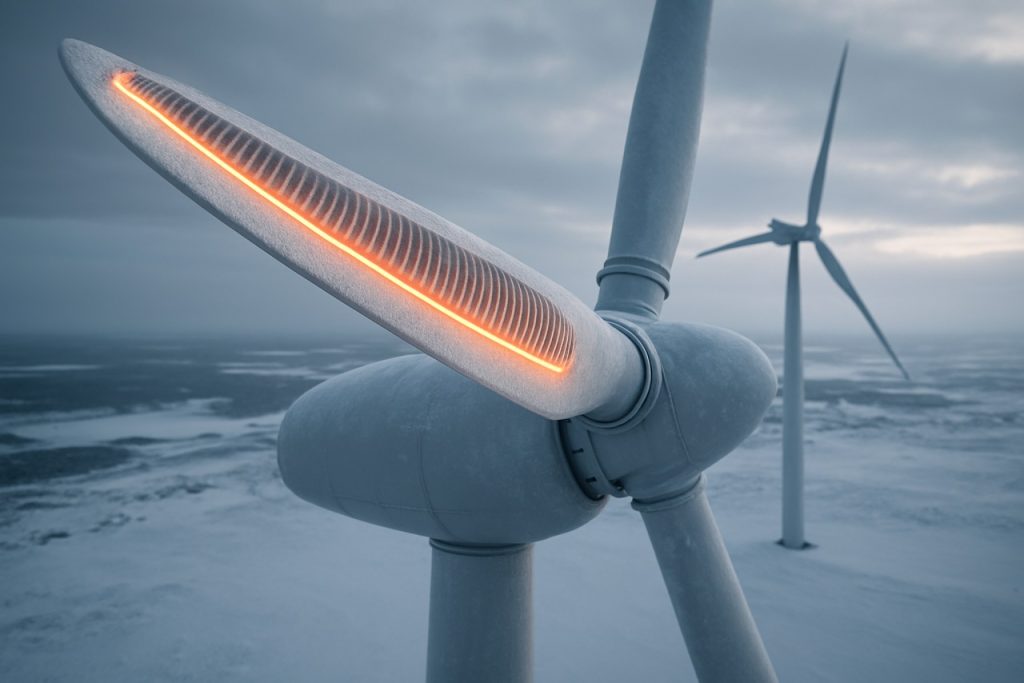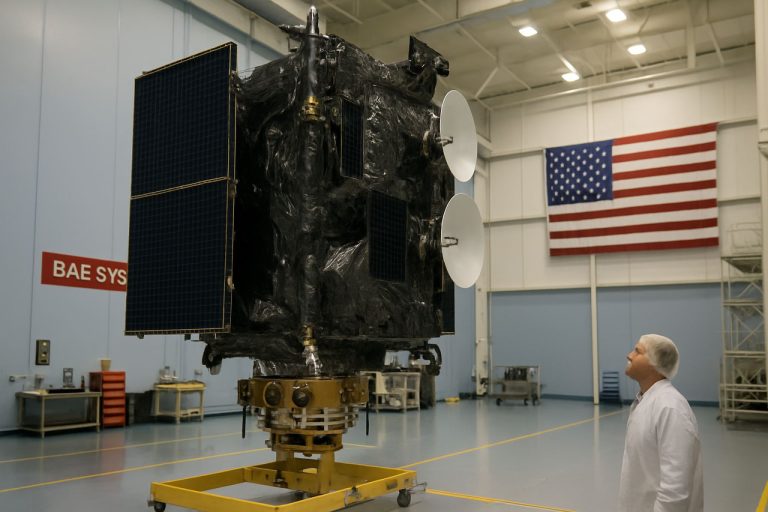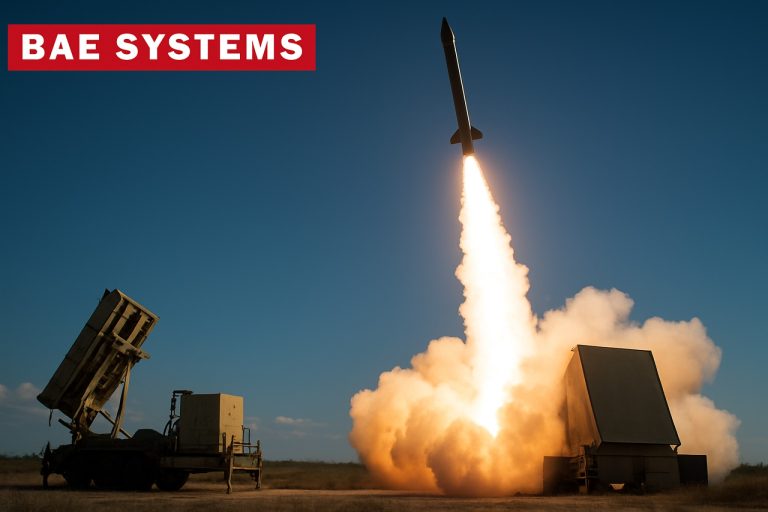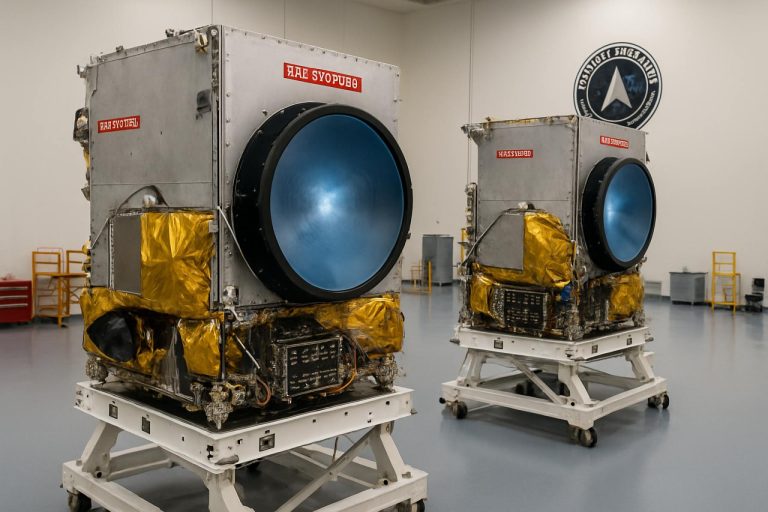
2025 Wind Turbine Blade De-icing Systems Market Report: In-Depth Analysis of Growth Drivers, Technology Innovations, and Regional Opportunities. Explore Market Size, Forecasts, and Competitive Dynamics Shaping the Industry.
- Executive Summary & Market Overview
- Key Market Drivers and Restraints
- Technology Trends in Blade De-icing Systems
- Competitive Landscape and Leading Players
- Market Size and Growth Forecasts (2025–2030)
- Regional Analysis: North America, Europe, Asia-Pacific & Rest of World
- Challenges, Risks, and Market Entry Barriers
- Opportunities and Future Outlook
- Sources & References
Executive Summary & Market Overview
The global market for wind turbine blade de-icing systems is poised for significant growth in 2025, driven by the rapid expansion of wind energy installations in cold and temperate regions. Wind turbine blade de-icing systems are specialized technologies designed to prevent or remove ice accumulation on turbine blades, which can otherwise lead to reduced energy output, increased mechanical stress, and safety hazards. As the wind energy sector continues to expand into northern Europe, North America, and parts of Asia-Pacific, the demand for reliable de-icing solutions is intensifying.
According to International Energy Agency projections, global wind power capacity is expected to surpass 1,000 GW by 2025, with a substantial portion of new installations located in climates prone to icing events. This trend is compelling wind farm operators and turbine manufacturers to invest in advanced de-icing technologies to maximize turbine availability and minimize maintenance costs. The market encompasses both active systems (such as electric heating elements and hot air circulation) and passive solutions (including hydrophobic coatings), with active systems currently dominating due to their higher efficacy in severe icing conditions.
Market research from MarketsandMarkets estimates the wind turbine de-icing system market will reach a value of over USD 300 million by 2025, growing at a CAGR of approximately 7% from 2020. Key growth drivers include stricter regulatory requirements for turbine safety, increasing turbine sizes (which are more susceptible to icing), and the rising cost of downtime associated with ice-related power losses. Notably, the European Union’s push for renewable energy and grid reliability is accelerating the adoption of de-icing systems in countries such as Sweden, Finland, and Germany.
Leading industry players, including Vestas, Siemens Gamesa Renewable Energy, and GE Renewable Energy, are investing in R&D to enhance the efficiency and cost-effectiveness of their de-icing solutions. Additionally, partnerships between OEMs and specialized technology providers are fostering innovation in both retrofit and new-build markets.
In summary, the wind turbine blade de-icing systems market in 2025 is characterized by robust growth prospects, technological innovation, and increasing strategic importance for wind farm operators seeking to ensure year-round energy production in challenging climates.
Key Market Drivers and Restraints
The market for wind turbine blade de-icing systems is shaped by a combination of strong drivers and notable restraints, each influencing adoption rates and technological innovation as the wind energy sector expands into colder climates.
Key Market Drivers
- Geographical Expansion of Wind Farms: The proliferation of wind farms in cold and icy regions, such as Northern Europe, North America, and parts of Asia, is a primary driver. Icing can reduce annual energy production by up to 20%, making de-icing systems essential for maintaining operational efficiency and revenue streams International Energy Agency.
- Increasing Turbine Size and Height: Modern wind turbines are larger and taller, exposing them to more severe icing conditions at higher altitudes. This trend necessitates advanced de-icing solutions to protect both performance and structural integrity Vestas.
- Regulatory and Safety Requirements: Grid operators and regulatory bodies are imposing stricter requirements for turbine availability and safety, especially in regions prone to ice throw hazards. Compliance with these standards is driving investments in reliable de-icing technologies Enercon.
- Technological Advancements: Innovations in both active (electrical, hot air) and passive (hydrophobic coatings) de-icing systems are improving efficiency and reducing operational costs, making adoption more attractive for wind farm operators Siemens Gamesa.
Key Market Restraints
- High Initial Investment: The upfront cost of installing de-icing systems, especially retrofitting existing turbines, can be significant. This is a deterrent for operators with tight capital budgets or in regions with marginal icing risk International Energy Agency.
- Operational Complexity and Maintenance: De-icing systems add complexity to turbine operations and require regular maintenance, which can increase downtime and operational expenses, particularly in remote or offshore locations DNV.
- Energy Consumption: Active de-icing solutions consume a portion of the generated power, potentially offsetting some of the gains in energy yield, especially during prolonged icing events Siemens Gamesa.
- Limited Standardization: The lack of universal standards for de-icing system performance and integration complicates procurement and deployment decisions for wind farm developers IEA Wind Task 19.
Technology Trends in Blade De-icing Systems
Wind turbine blade de-icing systems are undergoing significant technological advancements as the industry seeks to maximize energy yield and minimize downtime in cold climates. In 2025, several key technology trends are shaping the development and deployment of these systems, driven by the increasing penetration of wind power in regions prone to icing events.
- Electrothermal De-icing: The most widely adopted technology remains electrothermal de-icing, where embedded heating elements within the blade surface melt accumulated ice. Recent innovations focus on improving energy efficiency, with advanced materials such as carbon fiber heating mats and conductive coatings that offer faster response times and lower power consumption. Manufacturers are integrating smart sensors to activate heating only when necessary, further optimizing energy use (Siemens Gamesa).
- Hot Air Systems: Hot air de-icing, which circulates heated air through internal blade channels, is being refined with more precise temperature control and improved airflow management. These systems are increasingly paired with real-time ice detection sensors, allowing for targeted de-icing and reduced operational costs (GE Renewable Energy).
- Hydrophobic and Icephobic Coatings: The application of advanced surface coatings that repel water and prevent ice adhesion is gaining traction. In 2025, research is focused on durable, self-healing coatings that maintain performance over the blade’s lifespan, reducing the frequency and intensity of active de-icing interventions (DNV).
- Data-Driven Predictive Maintenance: Integration of IoT sensors and machine learning algorithms enables predictive maintenance, allowing operators to anticipate icing events and deploy de-icing systems proactively. This trend is supported by cloud-based analytics platforms that aggregate weather, performance, and sensor data for fleet-wide optimization (Vaisala).
- Hybrid Systems: There is a growing trend toward hybrid de-icing solutions that combine multiple technologies—such as electrothermal and hydrophobic coatings—to address varying icing conditions and improve overall system reliability (National Renewable Energy Laboratory).
These technology trends reflect the wind industry’s commitment to reducing energy losses, extending turbine lifespan, and ensuring reliable operation in challenging environments. As wind farms expand into colder regions, the adoption of advanced blade de-icing systems is expected to accelerate, supported by ongoing R&D and collaboration between OEMs, material scientists, and digital solution providers.
Competitive Landscape and Leading Players
The competitive landscape for wind turbine blade de-icing systems in 2025 is characterized by a mix of established wind technology giants, specialized de-icing solution providers, and emerging innovators. The market is driven by the increasing deployment of wind farms in cold climates, where ice accumulation on blades can significantly reduce energy output and increase operational risks. As a result, both OEMs and third-party suppliers are investing in advanced de-icing technologies to enhance turbine reliability and efficiency.
Key players in this sector include Vestas Wind Systems, Siemens Gamesa Renewable Energy, and GE Renewable Energy, all of which offer proprietary de-icing solutions integrated into their turbine platforms. Vestas, for example, has developed both hot air and electrical heating systems for blade de-icing, targeting markets in Northern Europe and North America. Siemens Gamesa’s Ice Detection and De-Icing System is designed to minimize downtime and optimize energy production in harsh winter conditions, while GE Renewable Energy has focused on both active and passive de-icing technologies to address a range of climatic challenges.
In addition to turbine manufacturers, specialized companies such as De-ice and Westwood Professional Services provide retrofit solutions and consulting services for existing wind farms. These firms often collaborate with operators to customize de-icing systems based on site-specific requirements, leveraging technologies such as electro-thermal heating, hot air circulation, and hydrophobic coatings.
The market is also witnessing increased activity from technology startups and research-driven firms, particularly in the development of advanced materials and sensor-based ice detection systems. For instance, Romona Group and Envision Energy are investing in R&D to create more energy-efficient and cost-effective de-icing solutions, including smart control algorithms and real-time monitoring platforms.
- Strategic partnerships and joint ventures are common, as companies seek to combine expertise in blade manufacturing, sensor technology, and data analytics.
- Regulatory requirements in key markets, such as Scandinavia and Canada, are pushing for more robust de-icing capabilities, further intensifying competition.
- Aftermarket services and retrofitting represent a significant growth area, as operators look to upgrade existing fleets to maintain performance in cold climates.
Overall, the competitive landscape in 2025 is marked by technological innovation, strategic collaborations, and a strong focus on operational reliability, with leading players leveraging both proprietary and collaborative approaches to capture market share in the expanding wind turbine blade de-icing segment.
Market Size and Growth Forecasts (2025–2030)
The global market for wind turbine blade de-icing systems is poised for significant growth between 2025 and 2030, driven by the rapid expansion of wind energy installations in cold climates and the increasing need to maximize turbine efficiency and reliability. In 2025, the market is estimated to be valued at approximately USD 250 million, with projections indicating a compound annual growth rate (CAGR) of 7–9% through 2030, potentially reaching a market size of USD 350–400 million by the end of the forecast period.
This growth is underpinned by several key factors. Firstly, the proliferation of wind farms in regions prone to icing—such as Northern Europe, North America, and parts of Asia—necessitates advanced de-icing solutions to mitigate power losses and mechanical stress caused by ice accumulation. According to Wood Mackenzie, nearly 20% of new wind capacity additions in 2025 will be in areas with moderate to severe icing risk, further fueling demand for de-icing technologies.
Technological advancements are also shaping market expansion. The adoption of both active (electro-thermal, hot air) and passive (hydrophobic coatings) de-icing systems is increasing, with OEMs and operators seeking solutions that balance energy consumption, maintenance costs, and operational effectiveness. DNV reports that electro-thermal systems currently dominate the market, but hybrid and next-generation passive systems are expected to gain traction, especially as operators look to reduce operational expenditures and environmental impact.
Regionally, Europe is anticipated to maintain the largest market share through 2025, supported by robust wind energy targets and government incentives for cold climate wind projects. However, North America is projected to exhibit the fastest growth rate, as U.S. and Canadian wind developers increasingly invest in de-icing retrofits and new installations to address winter performance challenges. The Asia-Pacific region, led by China and Japan, is also emerging as a significant market, with policy support for renewable energy expansion in cold and mountainous areas.
Overall, the wind turbine blade de-icing systems market in 2025 is characterized by strong growth prospects, technological innovation, and increasing geographic diversification. As wind energy continues to penetrate colder regions, the demand for reliable and cost-effective de-icing solutions is expected to remain robust throughout the forecast period MarketsandMarkets.
Regional Analysis: North America, Europe, Asia-Pacific & Rest of World
The regional dynamics of the wind turbine blade de-icing systems market in 2025 reflect varying levels of wind energy adoption, climate conditions, and regulatory support across North America, Europe, Asia-Pacific, and the Rest of the World.
- North America: The North American market, led by the United States and Canada, is characterized by significant investments in wind energy infrastructure, particularly in regions prone to harsh winters such as the Midwest and Northeast. The U.S. Department of Energy has highlighted the growing need for de-icing solutions to maintain turbine efficiency and reduce downtime during icing events. The presence of established wind farm operators and supportive government policies are expected to drive continued adoption of both active (electro-thermal, hot air) and passive (hydrophobic coatings) de-icing technologies in 2025. Canada’s wind sector, especially in provinces like Ontario and Quebec, is also increasingly integrating de-icing systems to address frequent ice accretion issues.U.S. Department of Energy
- Europe: Europe remains a frontrunner in wind energy deployment, with countries such as Germany, Denmark, Sweden, and the UK investing heavily in both onshore and offshore wind projects. The region’s cold climate zones, particularly in Scandinavia and the Baltic states, have accelerated the adoption of advanced de-icing systems. The European Union’s ambitious renewable energy targets and funding for innovation further stimulate market growth. Notably, Scandinavian wind farms are early adopters of electro-thermal and hybrid de-icing solutions, driven by the need to ensure year-round turbine performance.European Wind Energy Association
- Asia-Pacific: The Asia-Pacific region, led by China, India, and Japan, is witnessing rapid wind energy expansion. While much of the region experiences milder winters, northern China and parts of Japan face significant icing challenges. Chinese manufacturers are increasingly incorporating de-icing technologies into new turbine installations, supported by government incentives for renewable energy reliability. Japan’s mountainous wind sites also drive demand for robust de-icing systems, though overall market penetration remains lower than in Europe or North America.Global Wind Energy Council
- Rest of World: In other regions, including Latin America and parts of the Middle East and Africa, the adoption of wind turbine blade de-icing systems is limited due to generally warmer climates and lower risk of icing. However, select high-altitude projects in South America are beginning to evaluate de-icing solutions as wind energy infrastructure expands.International Renewable Energy Agency
Overall, the demand for wind turbine blade de-icing systems in 2025 is most pronounced in regions with cold climates and mature wind energy sectors, with Europe and North America leading in both technology adoption and market size.
Challenges, Risks, and Market Entry Barriers
The market for wind turbine blade de-icing systems in 2025 faces a complex array of challenges, risks, and entry barriers that shape its competitive landscape and growth trajectory. One of the primary challenges is the technical complexity of developing de-icing solutions that are both effective and energy-efficient. Blade de-icing systems must operate reliably in harsh, variable climates without significantly reducing the overall energy output of the turbine. This requires advanced materials, precise control systems, and integration with turbine monitoring platforms, all of which increase R&D costs and time-to-market for new entrants.
Another significant barrier is the high initial capital investment required for both retrofitting existing turbines and integrating de-icing systems into new installations. The cost sensitivity of wind farm operators, especially in regions with tight margins or subsidy reductions, can limit the adoption of these systems. Furthermore, the return on investment is highly dependent on local climatic conditions; in areas with infrequent icing, operators may be reluctant to invest in de-icing technology, constraining market size and growth potential.
Regulatory and certification hurdles also pose substantial risks. De-icing systems must comply with stringent safety and performance standards set by international and regional bodies, such as the International Electrotechnical Commission (IEC) and local grid operators. Achieving certification can be a lengthy and costly process, particularly for new market entrants lacking established relationships or experience in the wind energy sector.
Intellectual property (IP) protection and patent landscapes further complicate market entry. Leading players, including Siemens Gamesa and Vestas, have secured patents for proprietary de-icing technologies, creating potential legal risks for new entrants and limiting the scope for innovation without infringing on existing IP.
- Technical integration with diverse turbine models and control systems increases customization costs.
- Supply chain disruptions, particularly for advanced materials and electronic components, can delay production and deployment.
- Ongoing maintenance and reliability concerns, as de-icing systems must withstand repeated freeze-thaw cycles and harsh weather over long operational lifespans.
Overall, while the demand for wind turbine blade de-icing systems is expected to grow in cold climate markets, these challenges and barriers necessitate significant capital, technical expertise, and strategic partnerships for successful market entry and sustained competitiveness in 2025.
Opportunities and Future Outlook
The market for wind turbine blade de-icing systems is poised for significant growth in 2025, driven by the global expansion of wind energy into colder climates and the increasing need to maximize turbine efficiency and reliability. As wind farms proliferate in regions such as Northern Europe, North America, and parts of Asia, the risk of ice accumulation on blades—which can reduce energy output by up to 20% and increase maintenance costs—has become a critical operational challenge. This has created substantial opportunities for both established players and innovative startups to develop and deploy advanced de-icing solutions.
Technological advancements are a key driver of future market opportunities. The integration of smart sensors, real-time monitoring, and predictive analytics is enabling more efficient and targeted de-icing interventions, reducing energy consumption and operational downtime. Companies are investing in both active systems (such as electro-thermal and hot air solutions) and passive coatings that prevent ice adhesion, with research and development efforts supported by government incentives and international collaborations. For example, the European Union’s Horizon 2020 program has funded several projects aimed at improving de-icing technologies for offshore wind farms, reflecting strong policy support for innovation in this sector (European Commission).
Market analysts project a compound annual growth rate (CAGR) of over 7% for the wind turbine de-icing systems market through 2025, with the total market value expected to surpass $200 million by the end of the year (MarketsandMarkets). Key opportunities are emerging in retrofitting existing turbines, particularly in mature wind markets where operators seek to extend asset lifespans and improve return on investment. Additionally, the offshore wind segment is anticipated to be a major growth area, as harsh marine environments exacerbate icing risks and demand robust, low-maintenance solutions.
- Expansion into new geographies with cold climates, such as Canada and Scandinavia, is expected to drive demand.
- Collaborations between OEMs, utilities, and technology providers are accelerating the commercialization of next-generation de-icing systems.
- Regulatory frameworks mandating minimum performance standards for wind turbines in icy conditions are likely to further stimulate market growth.
In summary, the outlook for wind turbine blade de-icing systems in 2025 is highly positive, with innovation, policy support, and geographic expansion converging to create robust opportunities for industry stakeholders.
Sources & References
- International Energy Agency
- MarketsandMarkets
- Vestas
- Siemens Gamesa Renewable Energy
- GE Renewable Energy
- Enercon
- DNV
- Vaisala
- National Renewable Energy Laboratory
- Westwood Professional Services
- Wood Mackenzie
- Global Wind Energy Council
- European Commission



